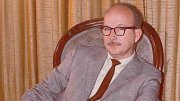The discussion of tenured appointments of women within the Faculty of Arts and Sciences (FAS) cooled somewhat during an extended airing of the issues at a faculty meeting December 14 (see "Tenure and Gender," January-February, page 64). Then, beyond University Hall, the heat was turned up remarkably in mid January, following remarks made by President Lawrence H. Summers at a conference on diversifying the scientific and engineering workforce (see "Gender Gap," above).
At the faculty meeting, after describing the very limited number of tenure offers made to women during the prior academic year (4 of 32 offers) as "unacceptable," FAS dean William C. Kirby stressed the importance of conducting thorough searches for prospective professors and of aggressive recruiting. He also mentioned the "less quantifiable obstacles" within departments -- attitudes toward taking parental leave and balancing career and family obligations -- that hamper women.
Citing the need to "motivate ourselves to do better," dean for the social sciences David Cutler, an economist, said that there would be "no [departmental] search devoid of discussion of this issue" in that division. And the division itself is looking for talented scholars whose work crosses disciplines, and, beginning this spring, expects to recommend that departments consider appointing them. (Kirby has given divisional deans power to initiate such extra-departmental appointments; see "Envisioning Arts and Sciences Anew.")
Dean for the humanities Maria Tatar, a scholar of German literature, echoed Cutler's remarks. Noting the gender equity of the undergraduate student body, compared to a predominantly male faculty, she said, "These numbers send a distressing signal" to students and junior faculty. Therefore, she said, the division will monitor searches, maintain records, and intervene with departments. On the matter of faculty development and family issues, she observed that by one count, only 44 percent of tenured women are married and have children, compared to 70 percent of tenured men -- a suggestively significant imbalance in care obligations and confiicting family-career demands.
Following these formal presentations, members of the faculty raised a number of matters beyond those previously reported (the importance of University leaders' public support for faculty diversity, the efficacy of appointing a faculty officer responsible for such issues versus vesting authority in the divisional deans and in each department).
* Leadership. Jones professor of American studies Lizabeth Cohen called for installing more women in positions of leadership: on the Harvard Corporation; as University Professors, Harvard's most distinguished scholars (just one of 17 incumbents is a woman); and in FAS's own ranks (no woman has sat at the round table in front of the Faculty Room since historian Susan G. Pedersen stepped down as dean of undergraduate education in 2002; she has since relocated to Columbia).
Cohen referred faculty colleagues to professor of sociology Michèle Lamont's summary of scholarly findings on recruiting, promoting, and retaining women in the academy. Among its recommendations: "support an increased number of women in university administration and recruitment committees," because "Women are more likely to be hired for positions generally occupied by men when there are more women in critical administrative posts."
* Eroding competitiveness. Professor of economics Caroline M. Hoxby said that the future of scholarship depends on drawing from the largest possible pool of talented individuals. While women are at least equally represented in selective schools' student bodies, and so are being prepared for high-performing careers, she said, they are being disproportionately attracted to nonacademic professions which have made far more progress in hiring: law, business, and medicine. That should lend urgency in the academy to more effective searches ("Be fiexible about the superficial things, so we can be infiexible about excellence": don't lose sight of scholarly brilliance because of a candidate's decisions on family timing or her career schedule) and to effective mentoring of junior professors.
* Junior faculty. Assistant professor of English and American literature and language Ann W. Rowland pointed out that although the number of women professors nearly tripled from 1988 to 2005 (rising from 27 to 86), the number of nontenured junior faculty women stagnated (56 in 1988; 73 in 1991; 55 in 2001; 68 today) as FAS de-emphasized hiring assistant and associate professors. Given Kirby's emphasis on junior-level hiring, she said, the faculty's composition depends on subsequent efforts to develop assistant and associate professors during the life stage when many women face their most consequential family choices.
The challenges are not small. Some professors report that junior-faculty searches can be less thorough and effective than those for tenured appointments. And David Cutler reported that discussions of mentoring within the social sciences yielded the "sense that we're a little bit at a loss" about how to bring junior colleagues along.
President Lawrence H. Summers characterized the afternoon exchanges as "a very successful effort at collective consciousness-raising." Turning to specifics, he urged faculty members to raise any concerns about diversity during tenure reviews. Rather than making it an exception to extend the tenure clock to accommodate junior faculty members' family needs, he suggested, reasonable accommodations of this sort ought to become the routine expectation. And departments could advance the broader University goal, he noted, by helping each other make key appointments when spousal positions are involved.
Finally, Summers challenged Hoxby's assessment that women are making greater progress outside academia. In a letter he sent last July to faculty members concerned about gender and tenure, Summers wrote, "I have been struck by the pervasive sense that, nearly a generation after the achievement of much greater gender balance in the ranks of those being trained for academic and professional careers, there has not been commensurate advance of women to the highest levels of these professions" -- in the elite professoriate, at leading law firms, atop major businesses, or as leading physicians at major hospitals. Examined this way, he said, the unfortunate fact is that FAS's 19 percent representation of women among senior professors appears relatively favorable.
Accordingly, he suggested on both occasions, more research was needed to understand "pipeline" issues in society at large. To begin, Lee professor of economics Claudia Goldin and Allison professor of economics Lawrence F. Katz will conduct a longitudinal study of "highly talented women across a range of professions." In other words, Summers said, even as the University had to do better in its own faculty hiring, it had an academic opportunity to explore these broader social concerns.





